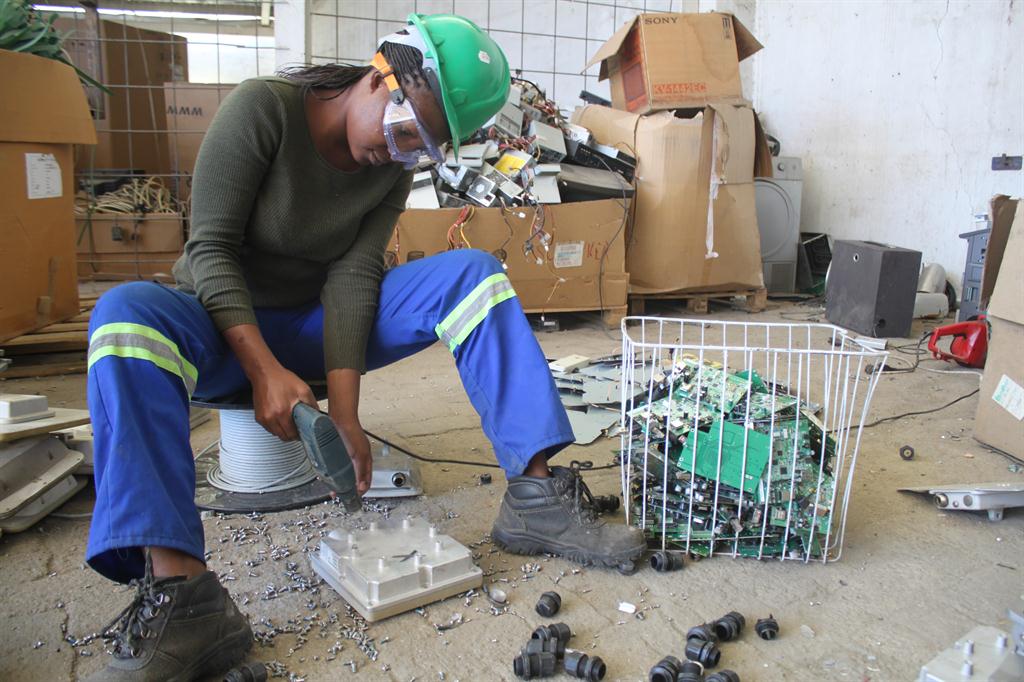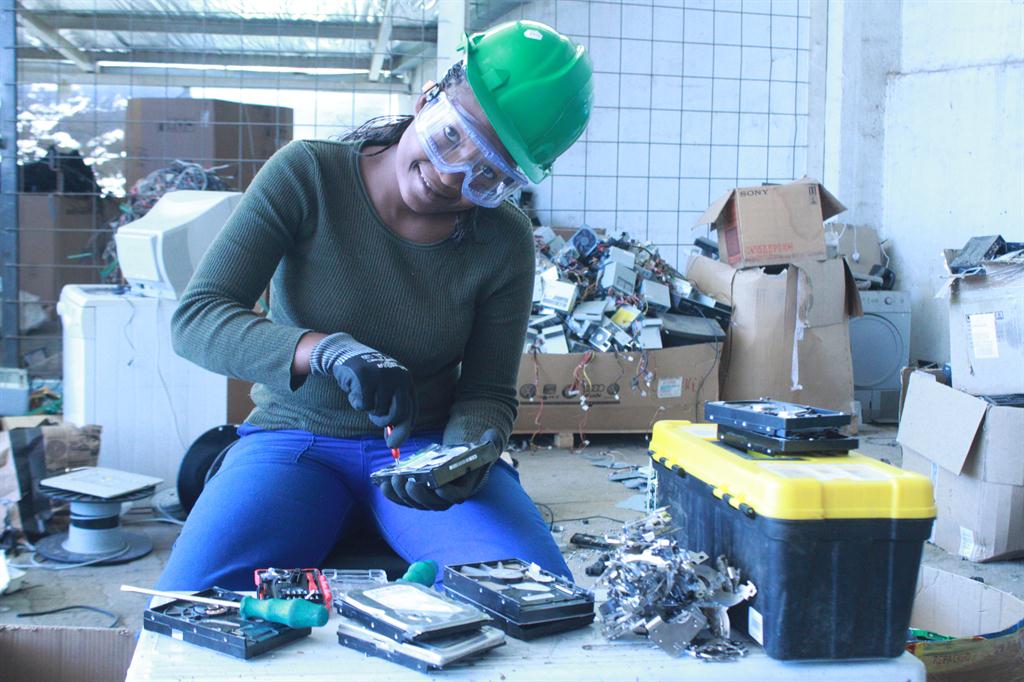NamiGreen makes strides
According to the company's internal records more than 50 000 kilograms of e-waste was recycled last year, which is 52% more than in the period 2015 to 2017.
Augetto Graig - Times are changing in Namibia as the recycling rates of electronic waste are increasing, and 2018 was the best year so far.
Local e-waste recycling company, NamiGreen, increased e-waste recycling rates last year. “There is still a way to go but steps are being taken in the right direction,” says business owner Per Elsted Hansen.
The continent with the highest recycling rate is Europe, recycling 35 % of all its e-waste. Asia comes in second with 22%, the Americas third with 17 % and Oceania fourth with 6%. Africa recycles around 0.5 %, according to the UN.
Namibia, as well as NamiGreen, which is located in Windhoek, had a good year in terms of recycling electronic waste (e-waste) in 2018.
NamiGreen was founded in 2018 and took over an existing e-waste business run by Transworld Cargo E-waste since 2015. According to the company's internal records more than 50 000 kilograms of e-waste was recycled last year, which is 52% more than in the period 2015 to 2017.
The company produces sorted electronics to be recycled for metals. On average a standard computer monitor weighs around 10kg, which means the operations at NamiGreen recycled the equivalent to 5 000 computer monitors in just one year. Or said in another way, this means that the equivalent of 5 000 computer monitors did not end up at landfill sites, thereby harming precious ecosystems in Namibia, Hansen said.
He attributes the major growth in e-waste recycling to increased awareness amongst Namibian communities and companies, a lean operation as well as tenacious employees.
There are six people employed at the moment, some full-time and some part-time, depending on the amount of work at any given time. In addition, NamiGreen works with Transworld Cargo on logistics, Hansen said.
On a global scale, e-waste recycling rates have room for improvement.
Forecasts for 2019 reveal more growth and NamiGreen is expected to beat previous e-waste recycling rates. This is something that will put a dent in the appalling recycling rates seen, not just in Africa, but in most countries worldwide, said Hansen.
According to the United Nations, 80% of all e-waste generated annually on global scale is not recycled.
The standard practice in Namibia for many years was to landfill electronic waste, but instead NamiGreen now creates jobs and removes the hazardous materials from the environment to avoid the pollution of the soil and underground water.
“E-waste contains hazardous components and must be safely handled by trained professionals. NamiGreen ensures legal compliance, a policy of zero landfill dumping and the safety of our staff. E-waste does not belong in a landfill,” said Hansen.
Entering 2019, the company will continue its growth strategy and expects to partner with more companies as well as citizens to start recycling e-waste properly. NamiGreen already works with some of the largest companies and organisations in Namibia and recently installed e-waste bins at the education ministry compound at the Government Office Park in Windhoek.
"Citizens can easily recycle their electronics by placing them in one of the many e-waste bins we have in Windhoek", said Hansen. “We offer companies and organisations a free e-waste collection service, where they simply call us or can go to our website - www.namigreen.com - and book e-waste collection online in a few minutes. That has been very well-received and we expect even more companies to use the service in 2019".
Fact box:
• E-waste or electronic waste is the fastest-growing waste stream in the world, according to the United Nations.
• More than 44.7 million metric tonnes of e-waste was generated globally in 2016 and that number is expected to increase to more than 52 million metric tonnes by 2021, according to the UN.
• 80% of global e-waste is not recycled, according to the UN.
Local e-waste recycling company, NamiGreen, increased e-waste recycling rates last year. “There is still a way to go but steps are being taken in the right direction,” says business owner Per Elsted Hansen.
The continent with the highest recycling rate is Europe, recycling 35 % of all its e-waste. Asia comes in second with 22%, the Americas third with 17 % and Oceania fourth with 6%. Africa recycles around 0.5 %, according to the UN.
Namibia, as well as NamiGreen, which is located in Windhoek, had a good year in terms of recycling electronic waste (e-waste) in 2018.
NamiGreen was founded in 2018 and took over an existing e-waste business run by Transworld Cargo E-waste since 2015. According to the company's internal records more than 50 000 kilograms of e-waste was recycled last year, which is 52% more than in the period 2015 to 2017.
The company produces sorted electronics to be recycled for metals. On average a standard computer monitor weighs around 10kg, which means the operations at NamiGreen recycled the equivalent to 5 000 computer monitors in just one year. Or said in another way, this means that the equivalent of 5 000 computer monitors did not end up at landfill sites, thereby harming precious ecosystems in Namibia, Hansen said.
He attributes the major growth in e-waste recycling to increased awareness amongst Namibian communities and companies, a lean operation as well as tenacious employees.
There are six people employed at the moment, some full-time and some part-time, depending on the amount of work at any given time. In addition, NamiGreen works with Transworld Cargo on logistics, Hansen said.
On a global scale, e-waste recycling rates have room for improvement.
Forecasts for 2019 reveal more growth and NamiGreen is expected to beat previous e-waste recycling rates. This is something that will put a dent in the appalling recycling rates seen, not just in Africa, but in most countries worldwide, said Hansen.
According to the United Nations, 80% of all e-waste generated annually on global scale is not recycled.
The standard practice in Namibia for many years was to landfill electronic waste, but instead NamiGreen now creates jobs and removes the hazardous materials from the environment to avoid the pollution of the soil and underground water.
“E-waste contains hazardous components and must be safely handled by trained professionals. NamiGreen ensures legal compliance, a policy of zero landfill dumping and the safety of our staff. E-waste does not belong in a landfill,” said Hansen.
Entering 2019, the company will continue its growth strategy and expects to partner with more companies as well as citizens to start recycling e-waste properly. NamiGreen already works with some of the largest companies and organisations in Namibia and recently installed e-waste bins at the education ministry compound at the Government Office Park in Windhoek.
"Citizens can easily recycle their electronics by placing them in one of the many e-waste bins we have in Windhoek", said Hansen. “We offer companies and organisations a free e-waste collection service, where they simply call us or can go to our website - www.namigreen.com - and book e-waste collection online in a few minutes. That has been very well-received and we expect even more companies to use the service in 2019".
Fact box:
• E-waste or electronic waste is the fastest-growing waste stream in the world, according to the United Nations.
• More than 44.7 million metric tonnes of e-waste was generated globally in 2016 and that number is expected to increase to more than 52 million metric tonnes by 2021, according to the UN.
• 80% of global e-waste is not recycled, according to the UN.







Kommentaar
Republikein
Geen kommentaar is op hierdie artikel gelaat nie